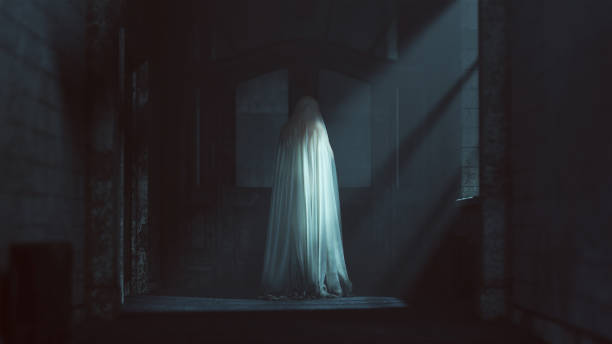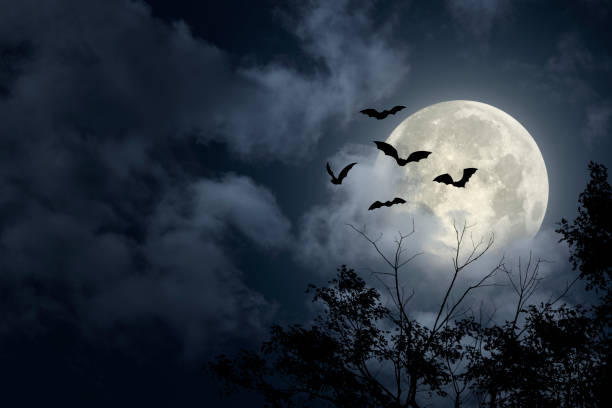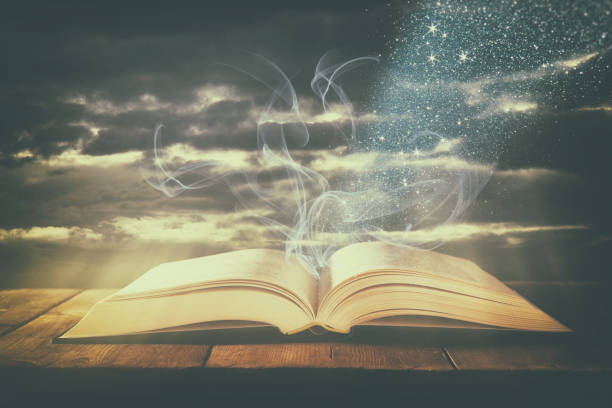How To Write Nightmare Scenes In Writing (10 Best Ways)
Writing nightmare scenes is like painting with the darkest shades of imagination, crafting eerie landscapes and unsettling scenarios that plunge readers into a world of chilling and often surreal terrors.
These scenes are not just for the horror genre but can be potent tools in any writer’s toolkit, adding depth, intensity, and psychological intrigue to a narrative.
In this guide, we’ll delve into the intricate art of creating nightmare scenes, exploring how to evoke spine-tingling fear, craft vivid, haunting imagery, and use the labyrinth of the human psyche to draw readers into the heart of darkness.
We’ll uncover the secrets of maintaining tension, balancing introspection, and planting the seeds of dread long before the nightmare descends.
Whether you’re a seasoned author or just beginning your writing journey, understanding the nuances of nightmare scenes can elevate your storytelling to new, spine-tingling heights.
So, prepare to step into the realm of the unsettling, as we embark on a journey through the mesmerizing art of crafting nightmares within the written word.
How To Write Nightmare Scenes In Writing
To write nightmare scenes in writing, you should focus on creating a vivid and unsettling experience for the reader. Start by employing these techniques:
Imagery:
Use descriptive language to paint a detailed and disturbing picture. Engage the reader’s senses by describing sights, sounds, smells, and textures that evoke fear or dread.
Emotion:
Tap into the character’s emotions to convey their fear and anxiety. Show their reactions and thoughts to make the nightmare relatable and intense.
Symbolism:
Incorporate symbols or motifs that have personal significance to the character or the story. These can add layers of meaning and unease.
Atmosphere:
Set the scene with a dark, foreboding atmosphere. Consider the setting, weather, and lighting to create a sense of impending doom.
Surrealism:
Embrace the dreamlike quality of nightmares. Allow for strange and illogical elements to be present, blurring the lines between reality and the dream world.
Pacing:
Build tension by controlling the pacing. Slow it down to heighten suspense and speed it up to create moments of shock and intensity.
Foreshadowing:
Include subtle hints or foreshadowing elements that link the nightmare to the overarching plot or character development.
Character Vulnerability:
Exploit the character’s vulnerabilities and fears in the nightmare. This makes the experience more personal and terrifying.
Twists:
Introduce unexpected twists or revelations within the nightmare to keep the reader engaged and anxious.
Resolution:
After the nightmare scene, provide a sense of relief or an opportunity for character growth. This can enhance the impact of the nightmare on the story.
Remember that the effectiveness of a nightmare scene depends on how well it fits within the larger narrative and how it contributes to character development and plot.
Understanding the Purpose
Understanding the purpose of weaving nightmares into your narrative is like holding the key to the shadowed realms of your readers’ deepest fears.
These dark dreams are more than mere literary spectacles; they are portals into the tortured souls of your characters and the underbelly of your story.
The purpose lies in your ability to grip your readers by their fear-stricken hearts and lead them through a maze of horrors, forcing them to confront the very essence of their own anxieties.
It’s a psychological dance that can both haunt and heal, a chance to explore the darkest corners of human emotion and the twisted beauty that can emerge from those depths.
In understanding this purpose, you unlock a realm of storytelling that transcends mere words on a page, creating an unforgettable, haunting experience for those brave enough to turn the key.
Defining the narrative purpose of nightmare scenes
Defining the narrative purpose of nightmare scenes within your story is akin to uncovering the hidden subterranean currents of your plot.
These harrowing visions serve as a mirror to the characters’ inner turmoil, revealing the skeletons that rattle in their mental closets.
More than just moments of terror, nightmare scenes are powerful tools for character development, conflict resolution, and thematic exploration.
They offer a unique vantage point to delve into the deepest recesses of the human psyche, unearthing fears, desires, and vulnerabilities that would otherwise remain concealed.
These scenes, while laden with dread, provide a platform for growth, a crucible in which characters can forge their destinies or succumb to their demons.
They lend a mesmerizing, often chilling depth to your narrative, compelling readers to not only witness but also empathize with the psychological complexities of your characters.
In defining their narrative purpose, you pave the way for a profound and unforgettable literary journey through the very heart of darkness.
Building Tension and Suspense
Building tension and suspense in your narrative is akin to crafting a literary high-wire act, where every word is a precarious step that keeps your readers teetering on the edge of anticipation.
It’s a symphony of unease, a crescendo of heartbeats echoing in the silence between sentences. As a writer, you hold the strings to your readers’ nerves, tightening them with each sentence, each whispered hint, until the tension becomes a palpable, hair-raising force.
It’s the art of making readers squirm in their seats, unable to look away, as you masterfully orchestrate a thrilling dance between what’s known and what’s feared, ultimately ensnaring their imaginations in the suspenseful web you’ve woven.
It’s the promise of revelations just around the corner, the breathless excitement of the unknown, and the undeniable magnetism that keeps them turning the pages long into the night.
Setting the stage with atmospheric descriptions
Setting the stage with atmospheric descriptions is like painting a vivid, haunting canvas for your readers to step into.
It’s the art of breathing life into the backdrop of your story, immersing your audience in a world where every detail resonates with emotion and foreboding.
A skillful writer can evoke not just what is seen but also what is felt, smelled, and heard, creating a sensory tapestry that envelops the reader’s senses.
With each carefully chosen word, you transport your audience to a realm where the air is heavy with tension, the shadows dance with secrets, and every gust of wind carries a whispered promise of the unknown.
These descriptions are the foundation upon which the entire narrative rests, anchoring the reader in a place where the extraordinary is made tangible, and the ordinary is transformed into the extraordinary.
They are the unseen characters in the story, shaping moods and expectations, and ultimately, setting the stage for the thrilling drama about to unfold.
Foreshadowing the impending nightmare
Foreshadowing the impending nightmare is like planting seeds of dread that grow in the reader’s mind, long before the darkness fully descends.
It’s a delicate dance of hinting at the approaching storm while keeping the details shrouded in mystery. In these carefully placed clues and symbols, there’s an electric undercurrent of anticipation, an unsettling feeling that something wicked this way comes.
Foreshadowing allows the reader to become an unwitting accomplice, piecing together the puzzle as they journey through the narrative, discovering fragments of the ominous puzzle before the full picture emerges.
It’s a storytelling technique that elevates suspense, offering a sense of inevitability, and making the eventual nightmare all the more spine-tingling when it finally engulfs the characters and readers alike.

Character Development
Character development is the enchanting alchemy that transforms the ink-and-paper inhabitants of your story into living, breathing souls.
It’s the art of weaving the threads of their past, present, and future into intricate tapestries of growth and transformation.
Just as in real life, your characters should be multi-faceted, ever-evolving entities, not mere puppets manipulated by your narrative whims. In their journeys, they discover hidden strengths, confront demons, and evolve in ways that mirror the human condition.
Like a sculptor chiseling away at a rough block of marble, you, the author, carve out their essence, shaping their hopes, fears, and desires into tangible, relatable forms that resonate with your readers.
It’s a captivating journey through the labyrinth of the human soul, where each twist and turn reveals a new facet of your characters’ identities, making them unforgettable, and forging a profound connection between the reader and the intricate personalities you’ve brought to life.
The protagonist’s emotional journey
The protagonist’s emotional journey is the heart and soul of any compelling narrative, a rollercoaster ride of feelings that immerses readers in the character’s inner world.
It’s a symphony of emotions, from the initial chords of desire or discontent to the climactic crescendo of personal revelation or transformation.
As we follow the protagonist, we witness the profound impact of their experiences on their psyche, tracing the delicate, often tumultuous steps towards self-discovery, healing, or growth.
Their emotional landscape, whether marked by joy, sorrow, or conflict, serves as a mirror to our own, allowing us to empathize and connect on a deeply human level.
In this journey, we see our own struggles, hopes, and fears reflected, making the protagonist not just a fictional figure, but a vessel for our own emotional exploration and a testament to the transformative power of storytelling.
Growth and transformation
Growth and transformation are the enchanting heartbeats of storytelling, the rhythmic pulse that infuses characters and narratives with vitality.
Like a seedling reaching for the sun, characters evolve through the trials and tribulations of their journey, ultimately blossoming into their most authentic selves.
This transformative odyssey is not merely a linear path from point A to B; it’s a dynamic, multi-dimensional process, marked by profound internal shifts, often catalyzed by external challenges.
It’s in these moments of metamorphosis that characters shed the skins of their former selves, revealing the vulnerability, strength, and wisdom that lay beneath.
It’s a reflection of the human experience, reminding us that, like the characters we love, we too have the potential for growth, transformation, and the pursuit of our fullest potential.
Crafting Vivid Nightmares
Crafting vivid nightmares is akin to being the architect of your readers’ darkest fears and most haunting fantasies.
It’s an art that requires a painter’s eye for detail and a poet’s way with words, as you navigate the eerie landscapes of the subconscious.
In this creative realm, you summon horrors that crawl from the depths of imagination, twisting the ordinary into something grotesquely extraordinary.
Vivid nightmares are a chilling waltz through the surreal, a voyage where the boundaries of reality blur into something both mesmerizing and macabre.
Like a skilled conductor orchestrating an orchestra of dread, you use symbolism, sensory perception, and metaphor to conjure an immersive experience that lingers long after the pages are turned.
These nightmarish visions are the ink that stains your readers’ dreams, the shivers that haunt their waking hours, and, above all, a testament to your storytelling prowess as you lead them on a descent into the deliciously dreadful unknown.
Utilizing symbolism and metaphors
Utilizing symbolism and metaphors is akin to weaving a secret language into the fabric of your narrative. It’s the art of imbuing your story with hidden layers of meaning, where every object, action, or event becomes a conduit for deeper interpretation.
Symbolism and metaphors act as mirrors to the themes, emotions, and conflicts of your story, offering readers an opportunity to engage in a nuanced dance of discovery.
Just as a skilled painter uses colors to evoke emotions, writers employ symbols and metaphors to paint the canvas of the reader’s imagination.
They invite us to explore the familiar in unfamiliar ways, and in doing so, foster a more profound connection with the narrative.
Through these literary devices, a simple object can become a vessel for profound truths, and a seemingly ordinary scene can reveal the depths of human experience.
It’s an enchanting aspect of storytelling, where words transcend their literal meanings, leaving the reader with a richer, more layered tapestry of understanding.
Creating surreal and disturbing elements
Creating surreal and disturbing elements in your narrative is akin to diving into the abyss of the uncanny, where reality twists and contorts into something both mesmerizing and nightmarish.
It’s an art of distorting the ordinary until it becomes unsettling, where the familiar becomes strange, and the benign becomes sinister.
These elements act as portals to the reader’s subconscious, summoning primal fears and visceral reactions. By pushing the boundaries of the expected, writers craft an experience that defies logic and flirts with the eerie.
It’s a realm where the laws of the world are rewritten, and the reader is transported into a haunting, dreamlike space where their own deepest anxieties can take shape.
In these surreal and disturbing moments, storytelling reaches its most potent, leaving an indelible impression and a lingering sense of disquiet in the minds of those brave enough to traverse the shadowed landscapes of the extraordinary.
Narrative Structure
Narrative structure is the architect’s blueprint of storytelling, a masterful arrangement that shapes the entire edifice of your narrative world.
Like a symphony conductor orchestrating a masterpiece, it choreographs the rhythm and tempo of your tale, guiding readers through a labyrinth of emotions and revelations.
It’s the compass that charts the course, the pendulum that swings between anticipation and satisfaction. Crafting a unique narrative structure is akin to designing a rollercoaster with unexpected twists and exhilarating drops, constantly defying expectations and leaving readers breathless with anticipation.
It’s a mosaic of carefully placed pieces, each reflecting and refracting the light of your story in a new, unexpected way.
A thoughtfully designed narrative structure is not merely the scaffolding upon which your tale stands; it’s a sculptor’s chisel, transforming words into an immersive, unforgettable experience, where every paragraph is a revelation, and every page an adventure into the unknown.
Placement within the story
Placement within the story is the compass that guides the reader through the narrative landscape. Just as location is everything in real estate, the timing of your scenes holds immense power in storytelling.
It’s a narrative jigsaw puzzle, where each piece fits snugly to create a seamless and immersive experience. The strategic placement of scenes dictates the ebb and flow of tension and pacing, whether to heighten suspense or allow a brief respite for reflection.
Like a chef’s careful timing in a multi-course meal, the arrangement of scenes can tantalize the reader’s appetite for the next revelation, ensuring they remain captivated from start to finish.
It’s in this orchestration that storytelling transcends mere words on a page, transforming into a captivating journey where the unexpected waits just around the corner, and each turn of the page becomes a thrilling adventure into uncharted territory.
Balancing action and introspection
Balancing action and introspection in a narrative is like orchestrating a symphony where thrilling crescendos and poignant interludes harmonize to create an unforgettable melody.
While action drives the plot forward and ignites readers’ adrenaline, introspection serves as a lyrical pause, allowing them to delve deep into the minds and hearts of the characters.
It’s in this rhythmic interplay that storytelling attains its full richness, where action propels the narrative’s momentum, while introspection grants insight into the characters’ motives and emotions.
It’s a dance between external turmoil and internal reflection that encapsulates the essence of the human experience.
The well-timed balance ensures that readers are not just witnesses to the story’s events but are also intimately acquainted with the inner struggles and transformations of the characters, fostering a profound connection and making every narrative twist or quiet revelation all the more resonant.
Engaging the Reader
Engaging the reader is the subtle art of casting a spell, a literary incantation that weaves a magnetic connection between words and imagination.
It’s a conjurer’s act where every page becomes a portal, beckoning readers into a world where the boundaries between reality and fiction blur.
This enchantment doesn’t just reside in the words themselves but in the spaces between, where curiosity breeds and questions take root.
It’s the thrill of anticipation, the art of unfurling secrets at just the right pace, and the delight of watching minds alight with wonder.
Like a master illusionist, engaging the reader is about inviting them to be both audience and actor in a narrative that transports, enchants, and transforms.
In this alchemical exchange, the story becomes a living entity, and the reader, the willing and eager participant, forever entranced by the magic woven within the pages.

Maintaining a sense of mystery
Maintaining a sense of mystery in a narrative is like walking a tightrope between revelation and concealment, where the allure of the unknown constantly beckons.
It’s the delicate dance of withholding just enough information to ignite curiosity and arouse intrigue. This narrative enigma acts as a magnetic force, pulling readers deeper into the story, their hunger for answers growing with each turned page.
Like a masterful puzzle, maintaining mystery encourages readers to become detectives, to piece together clues, and to engage their imaginations in a quest for revelation.
The narrative becomes a labyrinth, a treasure hunt of enigmatic truths and concealed motivations, keeping readers spellbound, their desire for answers transforming them into eager, relentless explorers of the narrative’s darkest and most beguiling corners.
The Aftermath
The aftermath in storytelling is akin to the hush that falls after a storm—the unsettling calm where the echoes of past conflicts still resonate in the reader’s mind.
It’s the twilight zone where characters reckon with the haunting remnants of their journey, the indelible marks etched upon their souls.
This is where the narrative threads that were once tightly woven unravel, revealing the tapestry of consequences and character evolution.
The aftermath isn’t an end but a beginning, a reflection on the scarred landscapes left by the tumultuous plot.
It’s the bittersweet epilogue, where victories come with losses, where heroes bear the weight of their choices, and where the reader, too, emerges transformed, as the reverberations of the story continue to haunt their thoughts long after the final page is turned.
Character reactions and consequences
Character reactions and consequences in storytelling are the intricate web that binds fiction to reality, injecting the narrative with authenticity and emotional resonance.
Just as in life, the choices made by characters ripple through the plot, affecting not only their own destinies but those of others as well.
The way they respond to challenges, joys, or sorrows is a window into their essence, offering a mirror to the human condition.
Whether these reactions lead to triumph or tragedy, they hold a compelling mirror to readers’ own experiences, evoking empathy and understanding.
The consequences of these choices, whether immediate or far-reaching, create a dynamic, evolving narrative that weaves the tapestry of a character’s growth, revealing the profound impact of their actions, and ultimately reminding us that even in the realm of fiction, choices have consequences, and the characters we encounter are vivid reflections of the intricate consequences of life’s decisions.
Case Studies and Examples
Case studies and examples in the realm of storytelling are like a treasure trove of narrative secrets, a gallery of masterpieces that reveal the intricate artistry behind the craft.
They are the keys that unlock the enigma of storytelling techniques, offering readers and writers a backstage pass to the inner workings of literary genius.
In these real-world experiments and captivating narratives, we dissect the alchemy of words, unveiling the magic that transforms ordinary sentences into gripping tales.
Like an archaeologist uncovering lost civilizations, we dig through the layers of these literary gems, discovering the buried treasures of plot twists, character development, and narrative structure.
Case studies and examples invite us to be both observer and participant, uncovering the secrets that captivate, unsettle, and inspire.
In this journey, we become not just readers but fellow travelers in the grand adventure of storytelling, as we learn from the maestros who have paved the way and embark on our own quests for narrative mastery.
Analyzing nightmare scenes from famous literature
Analyzing nightmare scenes from famous literature is akin to embarking on a journey through the darkest corridors of the human imagination, guided by the literary giants who have charted these unsettling territories.
It’s an exploration of the shadowy recesses where authors have masterfully distilled primal fears and hidden desires into words, crafting vivid dreams of dread and discord.
These scenes aren’t merely stories but windows into the human psyche, reflecting the anxieties and curiosities that haunt our collective consciousness.
As we delve into the chilling landscapes painted by literary legends, we become both travelers and scholars, dissecting the techniques and nuances that make these nightmares unforgettable.
Each sentence and symbol reveals the writer’s intimate dance with the human condition, unraveling the threads of terror and intrigue that continue to resonate with readers, reminding us that literature’s power lies in its ability to manifest our deepest fears and hopes in the realm of dreams and nightmares.
Writing Exercises and Prompts
Writing exercises and prompts are the keys that unlock the hidden chambers of creativity, inviting writers to embark on exhilarating literary journeys.
They are the sparking flint and the tinder for the storytelling fire, fostering inspiration and innovation. Like a skilled personal trainer for the imagination, these exercises challenge us to push the boundaries of our craft, to sweat our literary muscles, and to discover new horizons within ourselves.
Whether it’s a tantalizing prompt that dares us to explore the uncharted or an exercise that coaxes our words into uncharted territory, they are the secret gateways to worlds unknown.
In their embrace, we become both the creator and the explorer, forging our own paths through the wilderness of words, finding the treasures of untold stories and unexplored emotions.
Writing exercises and prompts are more than just tools; they are the keys to unlocking our potential, igniting the fires of inspiration, and ultimately, guiding us on an odyssey through the infinite landscapes of our own creativity.
Encouraging writers to practice crafting nightmare scenes
Encouraging writers to practice crafting nightmare scenes is akin to embarking on a spine-tingling journey of self-discovery and mastery.
Like a dark and mysterious labyrinth, these scenes challenge writers to navigate the depths of their own fears and imaginations, to confront the shadows lurking within their storytelling potential.
By delving into the art of crafting nightmares, writers sharpen their skills in atmosphere, character development, and suspense, honing their ability to keep readers enthralled and unsettled.
It’s an invitation to unleash their most vivid and haunting visions, to give life to the monsters under the bed and the ghosts in the closet.
This practice is not just about weaving tales of terror but about unearthing the depths of their own storytelling prowess, inviting them to delve deeper into the psychology of their characters and the intricate dance between light and darkness within their narratives.
In the eerie, often disturbing, process of crafting nightmares, writers find a gateway to their most authentic and imaginative storytelling selves, paving the way for a profound connection with their readers, and, ultimately, mastering the art of compelling and unforgettable storytelling.
Revision and Polishing
Revision and polishing are the artisanal phases of storytelling, where the raw gem of a narrative is carefully sculpted into a glistening masterpiece.
It’s akin to the jeweler’s craft, where every word is a facet to be honed, every sentence a setting to be perfected, and every paragraph a precious stone to be showcased.
Here, the creative process reaches its apex, as writers transform the chrysalis of their initial draft into the soaring butterfly of a polished work.
It’s the alchemy of turning clunky prose into lyrical poetry, of revealing the true essence of characters and plot, and of weaving in the subtle threads of foreshadowing and symbolism.
Like a painter adding the finishing touches to a canvas, the revision and polishing stage is where the narrative finds its true brilliance and depth.
It’s the moment when the writer takes on the role of the meticulous curator, ensuring that every detail, every word, contributes to the immersive experience, creating a narrative that gleams with the iridescence of literary excellence.
Techniques for self-editing and improving nightmare scenes
Techniques for self-editing and improving nightmare scenes are the writer’s midnight tools, the mirrors and torches that illuminate the shadowy realms of their storytelling.
In this process, writers take on the dual roles of the creator and the critic, scrutinizing their own dark creations with a keen and unrelenting eye.
They learn to cut the superfluous, to sharpen the imagery, and to cultivate the eerie, distilling their nightmares into chilling perfection.
This self-editing journey is not just about fine-tuning grammar and syntax; it’s a relentless exploration of the atmosphere, characters, and plot, with the aim of heightening suspense, deepening emotional resonance, and refining the art of crafting fear.
It’s in this process that the true alchemy of storytelling occurs, as the writer transforms their nightmares into waking horrors for readers, leaving them in a chilling grip of anticipation, and ultimately, unveiling the full extent of their narrative prowess.
Frequently Asked Questions about How To Write Nightmare Scenes In Writing
What are nightmare scenes in writing, and why are they important?
Nightmare scenes in writing are intense, vivid, and often unsettling sequences that invoke fear, anxiety, and suspense in the reader. They serve to create emotional connections, build tension, and contribute to character development and plot advancement.
How do I make nightmare scenes memorable and impactful for my readers?
To make nightmare scenes memorable, focus on creating a strong atmosphere, using descriptive imagery, and delving into the character’s emotions. Make the scenes relatable and emotionally charged.
What elements should I include in a nightmare scene?
A well-crafted nightmare scene should include elements such as vivid imagery, symbolism, a foreboding atmosphere, surrealism, and character vulnerability. These components can enhance the scene’s impact.
How do I maintain a balance between reality and surrealism in nightmare scenes?
Balancing reality and surrealism is crucial in nightmare scenes. You can achieve this by introducing dreamlike, illogical elements while keeping some aspects grounded in reality to maintain reader engagement and suspension of disbelief.
Should I foreshadow nightmare scenes in advance, or can they be sudden and unexpected?
Both approaches can be effective. Foreshadowing allows for a buildup of tension, while sudden and unexpected nightmares can provide shocking moments. The choice depends on your narrative goals and the impact you want to create.
Are there any common pitfalls to avoid when writing nightmare scenes?
One common pitfall is overusing clichés or relying too heavily on graphic violence or gore. Additionally, ensure that the nightmare scenes serve a purpose in advancing the plot or character development.
How can I ensure that nightmare scenes fit seamlessly into my story’s overall narrative?
Ensure that the nightmare scenes have relevance to the plot or character arcs. They should contribute to the story’s progression and not feel out of place or gratuitous.
Can nightmare scenes be used in various genres, or are they limited to horror writing?
Nightmare scenes can be used in various genres, not just in horror. They can add depth and complexity to character-driven or emotionally charged stories, depending on the context and themes.
How can I effectively conclude a nightmare scene and transition back to the main narrative?
A well-crafted transition can include a moment of revelation, character growth, or a sudden wake-up. Concluding a nightmare scene effectively depends on the impact you want to create in the reader.
Are there any recommended books or resources to study for mastering the art of writing nightmare scenes?
While there are no specific resources dedicated solely to nightmare scenes, you can study works by acclaimed authors in the horror and suspense genres, such as Stephen King, H.P. Lovecraft, and Shirley Jackson, to learn how they create impactful and chilling scenes.
Conclusion
In the world of storytelling, crafting nightmare scenes is a thrilling endeavor that unveils the tremendous power of words to evoke terror, introspection, and profound emotional impact.
Through this guide, we’ve delved into the mesmerizing art of painting darkness with prose, learning to set the stage with atmospheric descriptions, foreshadow impending nightmares, and master the dance between action and introspection.
We’ve discovered how to create surreal and disturbing elements and captivate readers with compelling characters and consequences that resonate long after the final page.
As we conclude this journey, it’s evident that writing nightmare scenes is not merely about inducing fear but about transcending the boundaries of ordinary storytelling.
It’s a testament to the inexhaustible depths of human creativity and the boundless horizons that can be explored through the written word.
Whether you’re penning tales of horror, mystery, or any genre, the skills developed here will allow you to infuse your narratives with chilling allure, prompting readers to embrace the darkness and embark on a mesmerizing journey where nightmares become art.
So, as you continue your writing odyssey, remember that the power to craft nightmares is also the power to captivate, provoke, and ultimately leave an indelible mark on the hearts and minds of your readers.








